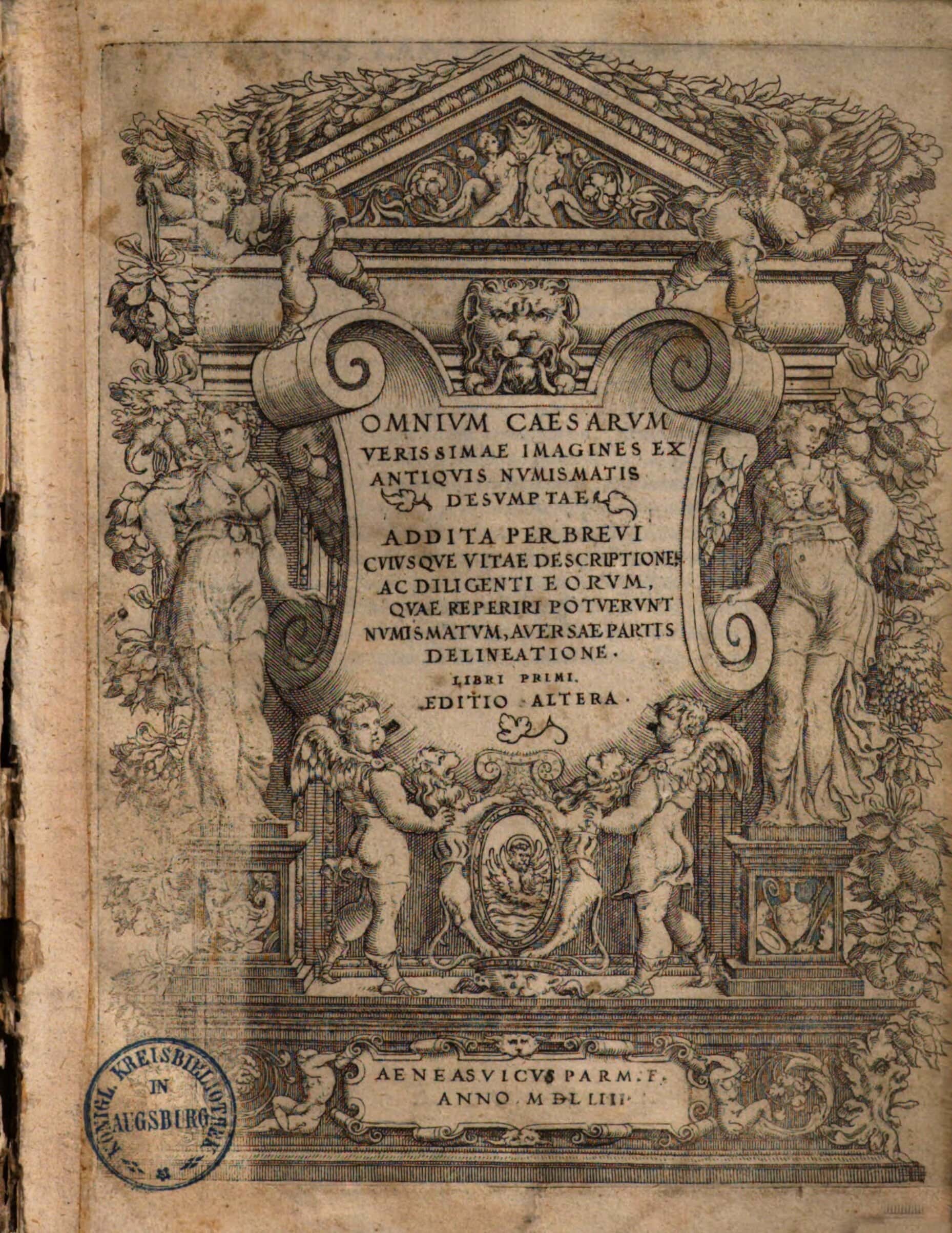TRANSLATIO NUMMORUM
The perception of classical antiquity via ancient coins by antiquarians in the Renaissance
BMBF Joint Interdisciplinary Project, 2009–2012
The aim of this three-year project was to carry out a comparative analysis of how scholars and antiquarians of the early modern period understood the culture and history of the period 49 BC to 96 CE through the lens of ancient coins.
For this project, the Kunsthistorisches Institut in Florenz (KHI) digitized an important collection of numismatic literature, from Andrea Fulvio to Francesco Angeloni. These texts were made available as a digital corpus of Early Modern Numismatic Literature, freely accessible and searchable on the internet.
The Münzkabinett in Berlin, the largest coin collection in Germany, also took part, offering the opportunity for project participants to study the original coins together with the literary tradition. The Münzkabinett catalogued and photographed all of its coins dating between the eras of Caesar to Domitian and made them available online in their interactive online catalogue (IKMK).
The Census evaluated the 16th and 17th-century numismatic literature digitised by the KHI. At the core of this investigation were the coins of the Julio-Claudian and Flavian eras. Images and descriptions by antiquarians were integrated into the Census database and records were linked to full texts. Renaissance representations were juxtaposed with genuinely ancient coin types, most of which could be found in the Münzkabinett in Berlin. This work formed the basis for analysing methods of numismatic research in the early modern period.
The project focused both on the history of the Roman Empire and on the 16th century, shedding light on the Renaissance interpretation of the ancient past. Through the creation of a digital corpus of early modern numismatic literature and the expansion of the online databases of the Münzkabinett and the Census, a substantial body of material was made available to researchers, opening up new possibilities in the fields of art history, numismatics and archeology.

Enea Vico, Omnium Caesarum verissimae imagines ex antiquis numismatis, 1554, title page
Kunsthistorisches Institut in Florenz (Max-Planck-Institut)
Prof. Dr. Alessandro Nova, Director
Dr. Jan Simane, Head of the Library
Münzkabinett der Staatlichen Museen zu Berlin (Stiftung Preußischer Kulturbesitz)
Prof. Dr. Bernd Kluge, Director
Prof. Dr. Bernhard Weisser, Curator
Census of Antique Works of Art and Architecture Known in the Renaissance (Humboldt-Universität zu Berlin)
Coordinator: Dr. Ulrike Peter (Berlin-Brandenburgische Akademie der Wissenschaften)

This Joint project was funded for three years as part of the call ‘Übersetzungsfunktion der Geisteswissenschaften’ (grant number 01UB0908) and was completed in March 2012